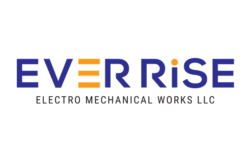In 2025, MEP (Mechanical, Electrical, and Plumbing) design and engineering compliance remains a critical aspect of building construction and renovation. As environmental sustainability, energy efficiency, and occupant safety become increasingly important, staying compliant with evolving regulations is essential for architects, engineers, and construction professionals. Understanding how MEP systems interact with both local and global standards is key to creating buildings that are not only functional but also sustainable and safe.
1. The Role of MEP Systems in Building Design
MEP systems are integral to the overall functionality and comfort of a building. These systems are responsible for heating, cooling, ventilation, lighting, plumbing, fire protection, and other key elements. Efficient MEP design ensures a balanced interaction between comfort, energy consumption, and safety. As building codes evolve, MEP engineers must stay ahead of changes to ensure compliance.
2. Compliance in 2025: A Global Perspective
Across the world, 2025 will see the continued integration of advanced technologies and regulations that require MEP systems to be more energy-efficient, environmentally friendly, and innovative. Some of the key areas of focus include:
a. Energy Efficiency and Sustainability
The need for energy-efficient buildings has never been more pressing. Governments are increasingly introducing regulations that require buildings to meet energy consumption standards. These include mandates for LEED (Leadership in Energy and Environmental Design) certification, net-zero energy buildings, and increased use of renewable energy sources.
MEP systems need to incorporate features such as:
- Advanced HVAC systems: To optimize energy usage, ensure air quality, and maintain temperature control.
- Smart lighting: Energy-efficient lighting systems with sensors and controls that adjust based on occupancy.
- Renewable energy integration: Using solar panels, wind energy, or geothermal systems to power a building.
In 2025, buildings that do not adhere to these energy-efficient standards may face penalties or fail to receive necessary permits.
b. Water Efficiency
With climate change and population growth, efficient water management is critical. MEP engineers are tasked with designing plumbing systems that minimize water waste. Innovations such as low-flow fixtures, rainwater harvesting, and greywater recycling are becoming standard in compliance regulations.
c. Health and Indoor Air Quality (IAQ)
Indoor air quality is a major factor in occupant health. As MEP design engineers, maintaining good IAQ is critical by integrating proper ventilation, air filtration, and humidity control systems. Compliance with IAQ regulations helps mitigate the risk of respiratory illnesses and ensures occupant comfort.
d. Smart Building Technology
In 2025, smart building systems are becoming the norm. Integrated MEP systems that connect with the Internet of Things (IoT) allow for real-time monitoring and automation of systems. Compliance in this area involves understanding new regulations for data privacy and ensuring energy management systems comply with local codes.
3. Local Regulations and Standards in MEP Compliance
While global trends set the stage, local regulations will vary by region. Cities like Dubai, New York, or London have unique codes for MEP design that professionals must follow. These regulations often include the following:
- National Electrical Code (NEC): For electrical systems safety and efficiency.
- ASHRAE Standards: Guidelines set by the American Society of Heating, Refrigerating and Air-Conditioning Engineers.
- International Plumbing Code (IPC): Governs plumbing installations and sanitation.
In some cases, jurisdictions will set their own local sustainability or building performance standards, which will further influence MEP design and engineering practices.
4. Challenges and Opportunities
Adhering to new MEP compliance standards in 2025 presents challenges for engineers, including rising costs and the need for constant training. However, these challenges also present an opportunity to adopt innovative technologies, streamline systems, and reduce long-term operational costs for building owners.
By focusing on sustainability, advanced technologies, and compliance with updated regulations, MEP engineers can not only enhance building performance but also contribute to a greener, healthier future.
Conclusion
MEP design and engineering compliance in 2025 demands a forward-thinking approach that integrates cutting-edge technologies, adheres to evolving regulations, and prioritizes energy efficiency, sustainability, and occupant safety. Building professionals must stay updated with global trends and local codes to deliver projects that are not only compliant but also contribute positively to the environment and society. As regulations continue to tighten and technologies evolve, embracing these changes will be crucial for creating the buildings of tomorrow.
